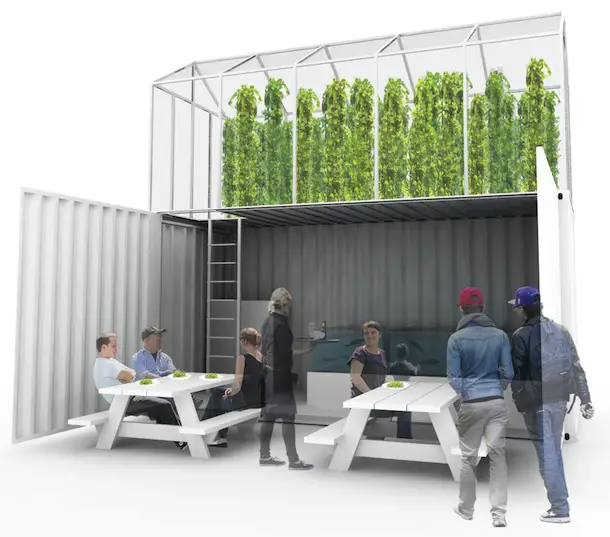Ask anyone involved in urbanism or city planning, and they will probably have at least some familiarity with the SimCity series. I myself have a soft spot for the game, kindled by many afternoons spent in front of an IBM 486 playing SimCity 2000 after a hard day of studying in the 3rd grade. Recently, a new version of the game was released: SimCity 5, or just SimCity for short. While the game has received plenty of buzz within the gaming public, how exactly does it relate to real world urbanism?
What’s new in SC5
Far and away the biggest change in this latest version of SimCity is the ability to add fully curved streets. Previous SimCities were grid-based, meaning that you could easily create straight or even diagonal streets but curving them would be a headache. Now, you can nice, gently arching streets, as well as zones that fit the curved street grid (there’s a whole explanation of how this works on the SimCity blog, sure to be entertaining for the programming-inclined). Regarding mass transit, the new SimCity has some pleasant as well as unpleasant surprises. Users have the option of implementing buses, lane-sharing streetcars, light rail, and commuter rail/heavy cargo lines. But at a recent Q&A session, game developers made the shocking revelation that, for the first time since the original SimCity, users won’t be able to place subways. SimCity fans came out in droves to express their outrage about this on the game blog.
Another development is a much more intricate simulation of individual citizens, or “sims” as the game refers to them. This allows factors such as health, education, and sanitation and crime to be determined not merely by the presence of schools, police departments, etc., but by the actions of the sims. Sims’ characteristics are randomized person by person for a more realistic overall city; some are healthier than others, for instance, others may be prone to pickpocketing. The simulation even includes individual police officers, doctors, and teachers too. Do a good job and your sims will come together to honour you, mess up and they rally in protest.
One other principal feature of the new SimCity is the availability of – and dependency on – specific natural resources. Cities will also be interconnected with outer cities, and patterns of development, commerce, and cultural interchange will be derived from these connections. Maxis, the game’s developer, is so intent on fostering this interconnection aspect that it is making online gameplay mandatory (a feature roasted by a columnist at The Atlantic Cities). All of this means that, for instance, if you start off in a playing field rich in coal and iron, your city might become like Pittsburgh in the late nineteenth century. And changing resource prices and a globalizing market might turn your city into Pittsburgh in the late twentieth century. Game designer Ocean Quigley has commented that the net effect of this is to steer players toward a sustainable city design; a city built on the availability of volatile resources and industries such as oil is prone to devastating recessions, fuel shortages, and environmental disasters. However, users will in many cases have to learn to be sustainable the hard way. Building a city on cheap, polluting resources is all too easy in the beginning.
Overall, the game has incorporated a host of new features that do in fact bring it that much closer to replicating the physical form of a city. If the new option to add curved streets makes the cities tend more toward the picket fences and little white box houses of suburbia, that might not be entirely bad; mayors will be able to test out fully suburban layouts, and see first hand the benefits, or drawbacks, of such a layout. More disappointing is the lack of subways, depriving players of a key component of many of the world’s major cities. Nevertheless, the innovations in this version make it a solid entry into the series. In terms of replicating the real experience of city design, however, the biggest problem lies not in the specific features of this version but the overall format of the game.
Sim Haussman
Since its creation, SimCity has been a game that, needless to say, gives you certain options unavailable to anyone in real life. Want to build a road? Don’t worry about hiring engineers or construction workers, just click a button and the road magically appears after deducting the appropriate amount of cash from the city treasury. Is there a house in town that you think is too ugly? Click the little bulldozer button and kapow! The house is now a pile of rubble. As mayor, you have absolute power over your city, completely unhindered by city councils, lobbyists, or ever having to run for reelection. In fact, one comedy group has put together a parody campaign for a hypothetical SimCity mayor who runs on a platform of, “If you don’t vote for me, I’ll destroy the whole city just by pushing a button.”
Real life cities, in almost all cases, are not the result of a single dictatorial mayor but a vast collection of planners, politicians, and concerned citizens. There have been a few moments in history, however, where a single individual has held the power of a SimCity mayor – think Baron Haussmann in Paris, Cerdà in Barcelona, or Oscar Niemeyer in Brasilia.

Baron Haussmann’s wide boulevards in Paris are a real world example of the authoritarian civic control common in SimCity games.
Though over the years, various versions of SimCity have incorporated elements of community participation (or lobbyist-induced corruption), it’s inevitable that with so much power in the hands of just one person, the virtual cities in SimCity end up with a Hausmann-esque feel to them. And the scary truth is that sometimes, this shocking lack of democracy doesn’t have completely negative results, even in real life. For example, Haussmann still has staunch defenders in Paris.
But the real reason why SimCity gives you such unrestricted control has nothing to do with any political statement on the efficacy of quasi-dictatorial mayors. It all comes down to the basic fact that having full control over your city is much more fun. The latest SimCity release had such a high demand that the game’s server crashed when it was released – can you imagine the same happening if they were to release a SimCityCouncil? No, you can’t. And really, in a purely virtual realm where real people aren’t affected, letting users experiment with absolute power might not be such a bad thing. That way, they can see the successes or failures of their designs played out after a full-scale implementation.
But what about the cities of the world that aren’t the product of a singular developmental mind but rather a diffuse collection of decision makers, that nonetheless attain worldwide influence and success? What is the value of the democratic process in city design, and can it (or should it) have a place in a SimCity game?
The Human Element
By all accounts, this latest SimCity is far and away the most accurate in replicating a true to life city experience based on the actions of entities that actually resemble human beings. In a city, it’s easy to forget that the decisions of everyday people are brought to bear on the city as a whole. And this latest edition showcases the human element much more than earlier versions, and perhaps as much as any SimCity title could possibly hope to do.
But SimCity is still a computer game, and unless you’re playing the game on an HAL-9000, simulated residents can never truly reach the level of distinctiveness as real human beings. Perhaps the elements of the city you’re least likely to be able to find in SimCity are the ones you’re likely to hear about here at This Big City, or on other urban news sources: street art, critical masses, vending machines that accept recycled bottles instead of coins – all of which lead to macro-level phenomena such as gentrification and the renovation of hard-hit neighbourhoods. Even with a vastly revamped citizen simulator, it’s hard to recreate these phenomena and the effect they have on the totality of the city.
For the time being, the latest SimCity promises to be a well thought out new version of the game. If it still can’t replicate the full range of individual participation in cities, it nonetheless represents a concerted effort to create a more human version of city dynamics. While there may be plenty left over for SimCity 6 to tackle – maybe the next time around they’ll opt to put the subways back in – there’s still plenty of new goodies for urban thinkers to be impressed by this time.


